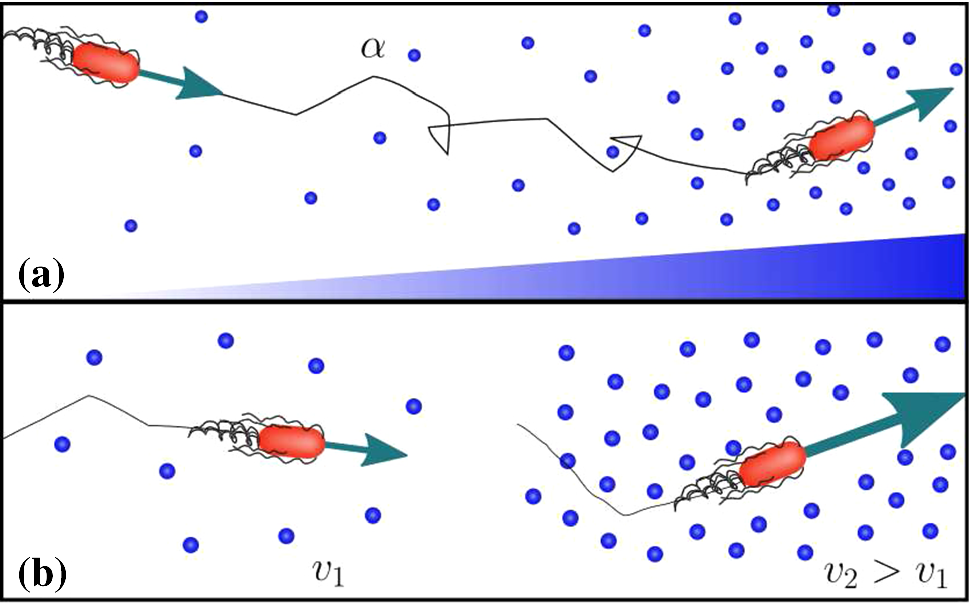EPJ E Highlight - Modelling speed-ups in nutrient-seeking bacteria
- Details
- Published on 17 March 2021

By considering how some bacteria will swim faster within higher nutrient concentrations, researchers have created a more accurate model of how these microbes search for nutrients
Many bacteria swim towards nutrients by rotating the helix-shaped flagella attached to their bodies. As they move, the cells can either ‘run’ in a straight line, or ‘tumble’ by varying the rotational directions of their flagella, causing their paths to randomly change course. Through a process named ‘chemotaxis,’ bacteria can decrease their rate of tumbling at higher concentrations of nutrients, while maintaining their swimming speeds. In more hospitable environments like the gut, this helps them to seek out nutrients more easily. However, in more nutrient-sparse environments, some species of bacteria will also perform ‘chemokinesis’: increasing their swim speeds as nutrient concentrations increase, without changing their tumbling rates. Through new research published in EPJ E, Theresa Jakuszeit and a team at the University of Cambridge led by Ottavio Croze produced a model which accurately accounts for the combined influences of these two motions.
The team’s findings deliver new insights into how self-swimming microbes survive, particularly in harsher environments like soils and oceans. Previously, studies have shown how chemokinesis allows bacteria to band around nutrient sources, respond quickly to short bursts of nutrients, and even form mutually beneficial relationships with algae. So far, however, none of them have directly measured how bacterial swim speeds can vary with nutrient concentration.
Starting from mathematical equations describing run-and-tumble dynamics, Croze’s team extended a widely used model for chemotaxis to incorporate chemokinesis. They then applied the new model to predict the dynamics of bacterial populations within the chemical gradients generated by nutrient distributions used in previous experiments. Through their approach, the researchers showed numerically how a combination of both motions can enhance the responses of populations compared with chemotaxis alone. They also presented more accurate predictions of how bacteria respond to nutrient distributions – including sources which emit nutrients sporadically. This allowed them to better assess the biological benefits of motility.
T Jakuszeit, J Lindsey-Jones, F J Peaudecerf, O A Croze (2021) Migration and accumulation of bacteria with chemotaxis and chemokinesis, Eur. Phys. J. E 44:32. https://doi.org/10.1140/epje/s10189-021-00009-w




